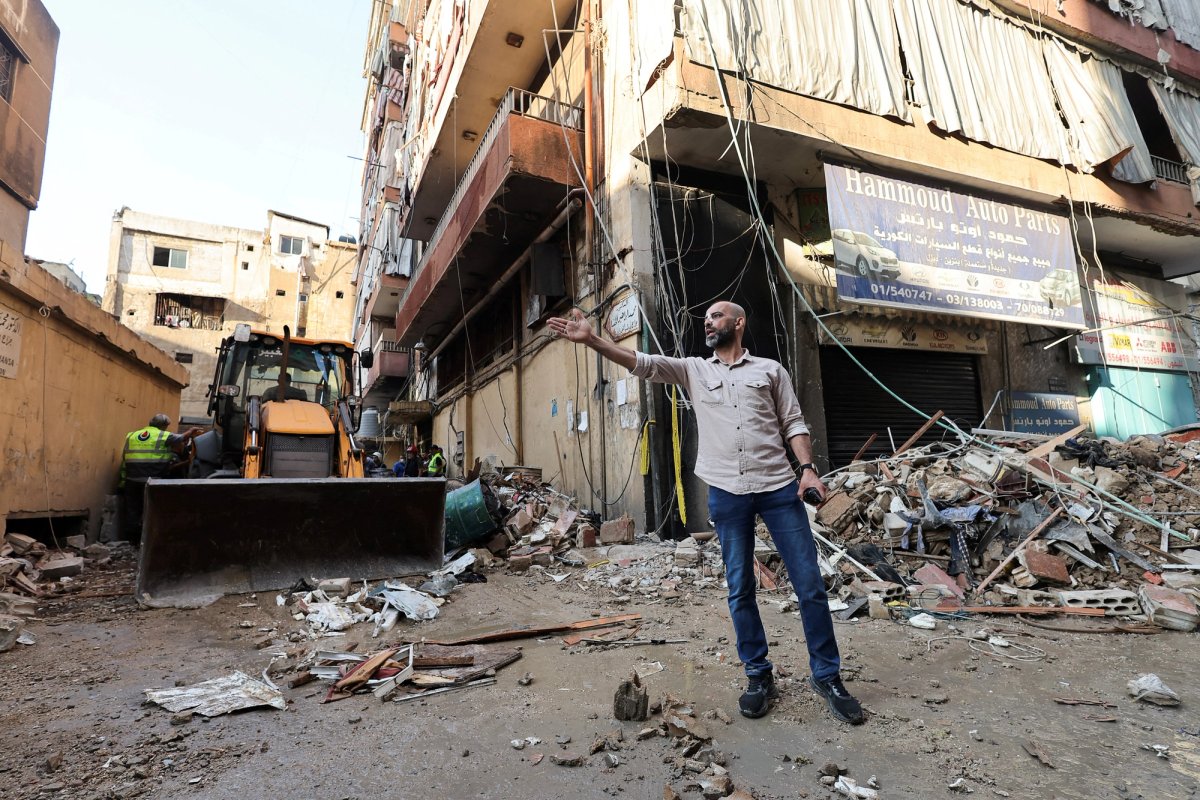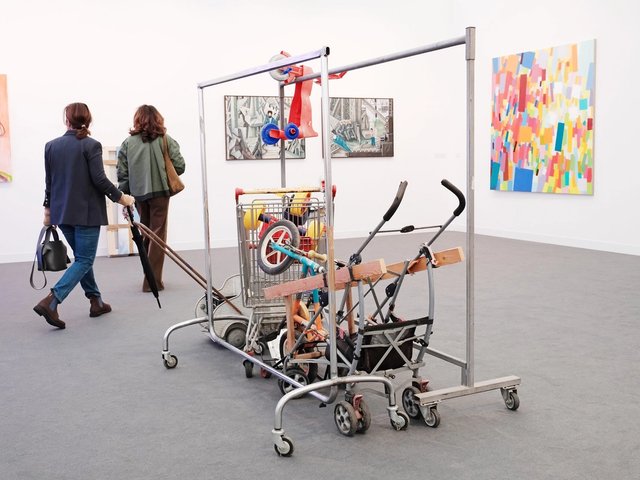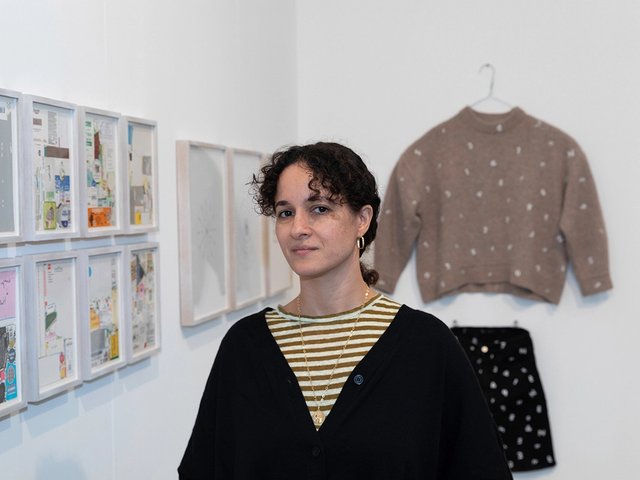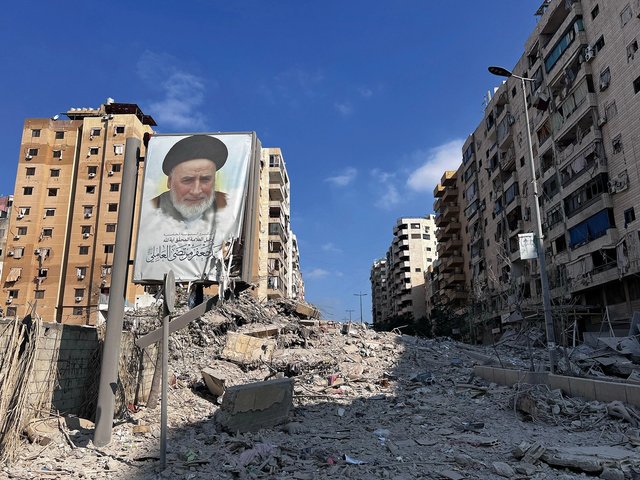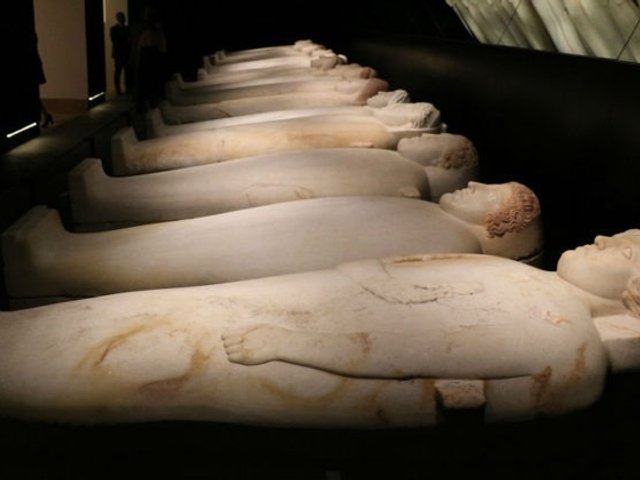Artists and gallerists in the Lebanese capital of Beirut say they continue to work despite the wave of airstrikes launched on the country by Israel over the past three days.
Since Monday 23 September Israeli bombs have killed more than 500 people, including women and children, and wounded more than 1,800 others, stoking international fears of a wider regional war. The Israeli military meanwhile says it has hit 1,600 Hezbollah targets in an operation to destroy infrastructure built up by the armed group, which is considered a terrorist organisation by the UK.
A strong sense of community
Nathalie Khayat, a ceramicist, has been teaching in her Beirut studio since 2000. “Just this morning, after a night of intense bombing on different regions of Lebanon, I opened my studio to my students for their weekly session. No one failed to come.
“They all say the same thing: it is crazy but it is better than moping around the house all day. We gather and we start making with a very strong sense of community. This is what we do, what we need to do unless we’re brutally forced to stop,” she says.
She describes how events have evolved. “A week ago, there was a shift when we saw the threat becoming a reality. Lebanon is being shelled by Israeli airstrikes, not only at the frontier. Even if I am not directly targeted, the idea of going to the studio to make art somehow becomes futile.
“I struggle to find meaning to what I do. I lose it. We enter a survival mode. A sad black and white frozen reality.
“This is so familiar. I feel my whole life has been on rollercoasters. I am 57, I was nine years old at the start of the Lebanese war [1975-90] and have since lived so many different wars on this tiny territory. Now I know my pattern.
“At one point rage will take over. At one point while surviving this, I will get back to making something with my hands—with rage, necessity and selfishness. For the sake of my sanity and in search of connection with my own humanity.
“I will look for beauty, poetry, and raw emotions through my absurd reality. Art is the opposite of war; I need to create while the world around me is being destroyed. It is as simple as that.”
Asked how the wider art world can help, Khayat adds: “When humanity is in question anything but silence is what the world needs, not only those being under the bombs. Anything but this deafening sanitised silence.”
Fears for the future
Commercial galleries have also been affected, including Marfa’ Projects, a contemporary art gallery in Beirut’s port district which is now closed until further notice. Joumana Asseily, the gallery’s founder, tells The Art Newspaper: “As we have learned in Lebanon over the years, we will be closed only as long as there is a significant risk to our coworkers. We will be working remotely and open by appointment when the situation permits.
“The problem with the situation is never the present but always the potential future. The present is quite manageable, however things can escalate extremely quickly to a point where it becomes exceedingly dangerous and no one knows what tomorrow will bring.”
Asseily adds: “It is all heartbreaking, and more than ever we have to do our best to keep functioning and working; culture remains as important as ever. Galleries, colleagues and art lovers from all over the world reached out giving their support; it is heartwarming. As concrete steps we need to be able to continue to travel, be present in art fairs and showcase the work of our artists who need it now more than ever.”
The gallery aims to participate in Frieze London and Art Basel Paris next month. Sfeir-Semler, another contemporary art gallery, has also posted a notice on social media saying it remains closed.
'We hope to open our doors soon'
Meanwhile, the Archaeological Museum at the American University of Beirut remains shut during the airstrikes. “We are continuously monitoring the situation and will reopen once it is deemed safe. As for protective measures, we have already implemented several protocols to safeguard the collection. We are reinforcing existing security measures and taking every possible precaution to protect our valuable assets during this time,” says the museum curator, Nadine Panayot.
Elsewhere, at The Sursock Museum, decisions are being taken on a daily basis, with doors do far closed on 25 and 26 September. "The Sursock Museum has an emergency evacuation plan for the staff, vistors as well as the collection," says a statement.
"We also coordinate day to day as to not put any staff members at risk during their commute. We have already activated the evacuation plan for the artworks, pieces on loan have been moved back to storage, as well as some pieces we assessed were at risk. We hope to open our doors again as soon as possible."
The National Museum of Beirut did not respond to requests regarding opening hours.
UPDATE: this article was amended on 26 September to include information provided by The Sursock Museum.


